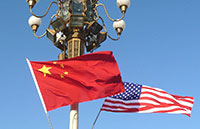Pension fund to ballast stock market
(Xinhua) Updated: 2015-08-25 09:00BEIJING - China's greenlighting of its pension fund to invest in the stock market failed to lift share prices on Monday, but economists expect the move to make trading less volatile in the long run.
The State Council finalized guidelines on investment of the country's huge pension fund on Sunday, effectively clearing the path for billions of dollars of investment in the country's ailing stock market.
The move came earlier than expected and with the obvious purpose of shoring up investors' confidence and stabilizing the market, said Ren Zeping, an analyst with Guotai Junan Securities.
A draft of the guidelines was released in late June to solicit public opinions, and they were expected to take effect near the end of this year.
China's stock market tumbled more than 11 percent last week, following the release of weak economic data. It continued to spiral downward on Monday, diving 8.49 percent in the sharpest fall since 2007.
Under the new guidelines, up to 30 percent of the pension fund's net assets can be invested in stocks and equities. The fund has assets of around 2 trillion yuan ($326.8 billion) that could be invested, meaning up to 600 billion yuan could theoretically go into the stock markets.
That would be equivalent to around 1 percent of the total market value of Chinese shares currently.
"The scale of the funds is limited and they will enter the stock market gradually, so their short-term impact will be quite small," said Ren.
However, with the gate opened, a sustained, steady flow of pension funds into the market in future will help stabilize expectations and guide investors away from speculation to value investing in the long term, he said.
While institutional investors dominate mature stock markets, 99 percent of stock investors in China are individuals. These mom-and-pop investors tend to speculate and sell and buy more frequently to earn quick money, making the Chinese stock market more volatile than those in developed countries.
Chinese shares have been on a roller-coaster ride this year, rising by nearly 60 percent from the beginning of the year to a peak in June before free falls from mid-June to early July wiped off most of its gains this year.
- 2015 China International Fair for Investment and Trade kicks off in Xiamen
- China's commodity imports robust in Jan-Aug period
- China stocks rebound 2.92%
- 2015 China box office already past 2014 total
- China foreign trade decline widens in August
- Interview: JP Morgan's senior executive bullish on China
- Innovation, development the focus for NZ mayors
- Lives of freelancers

















